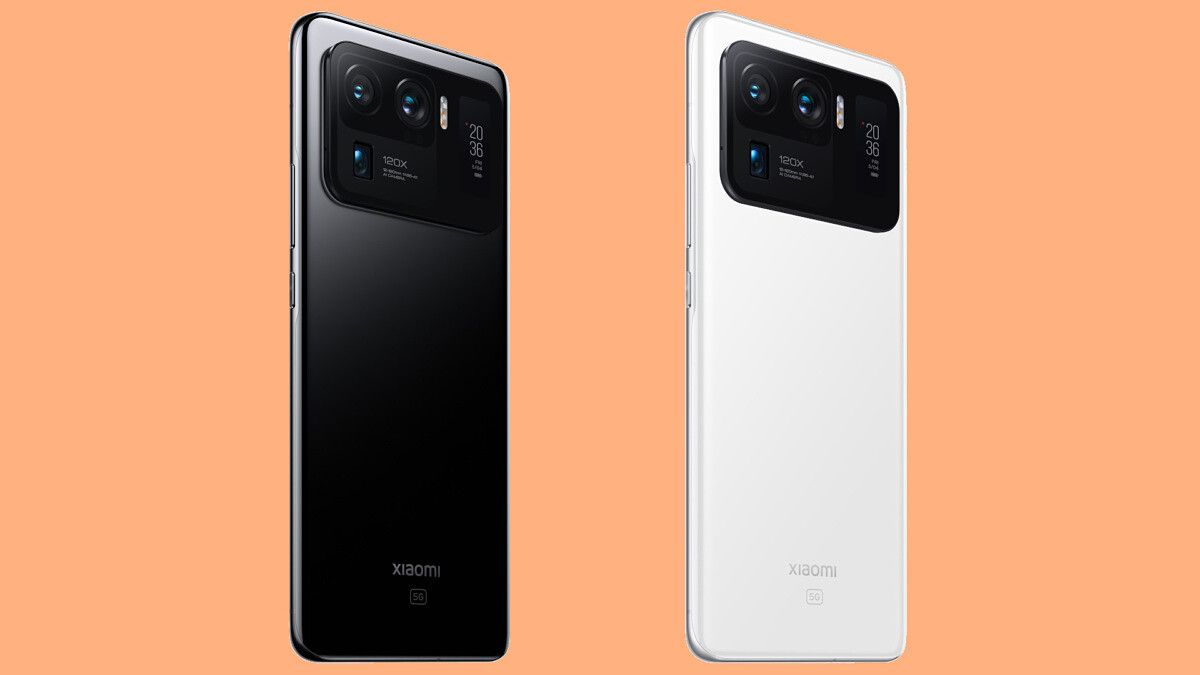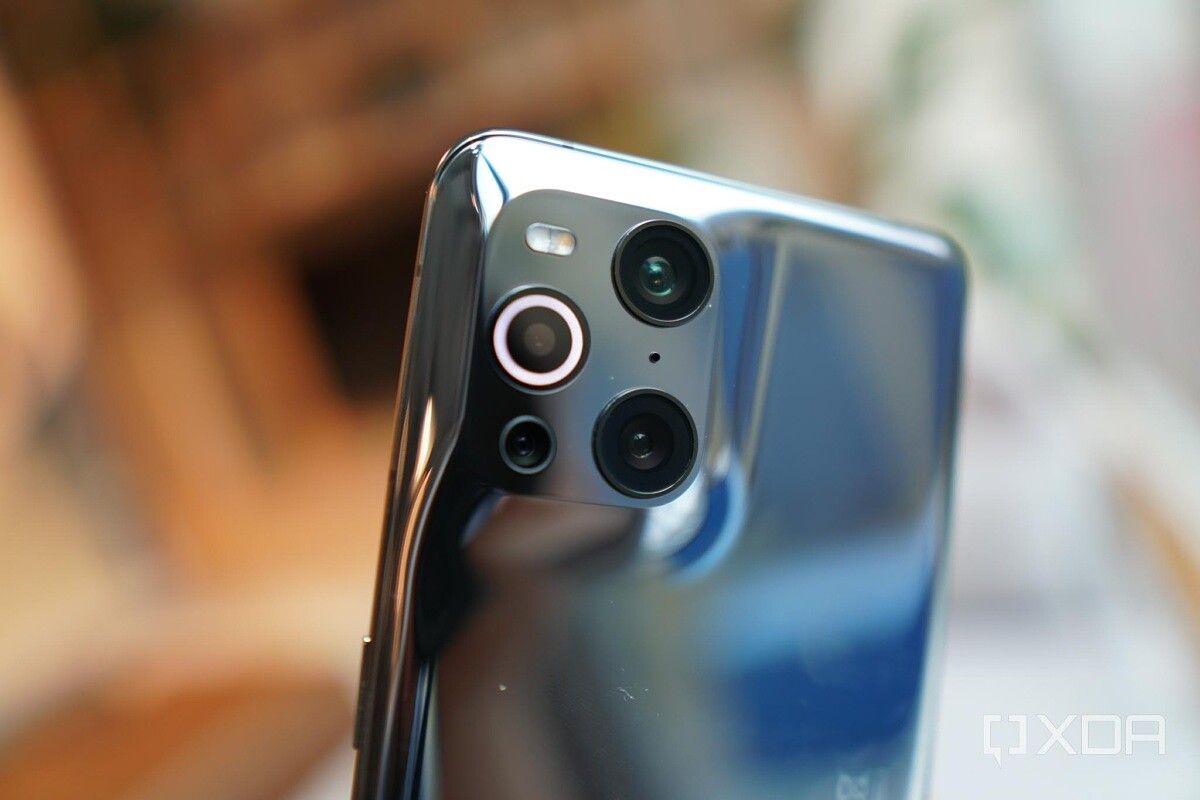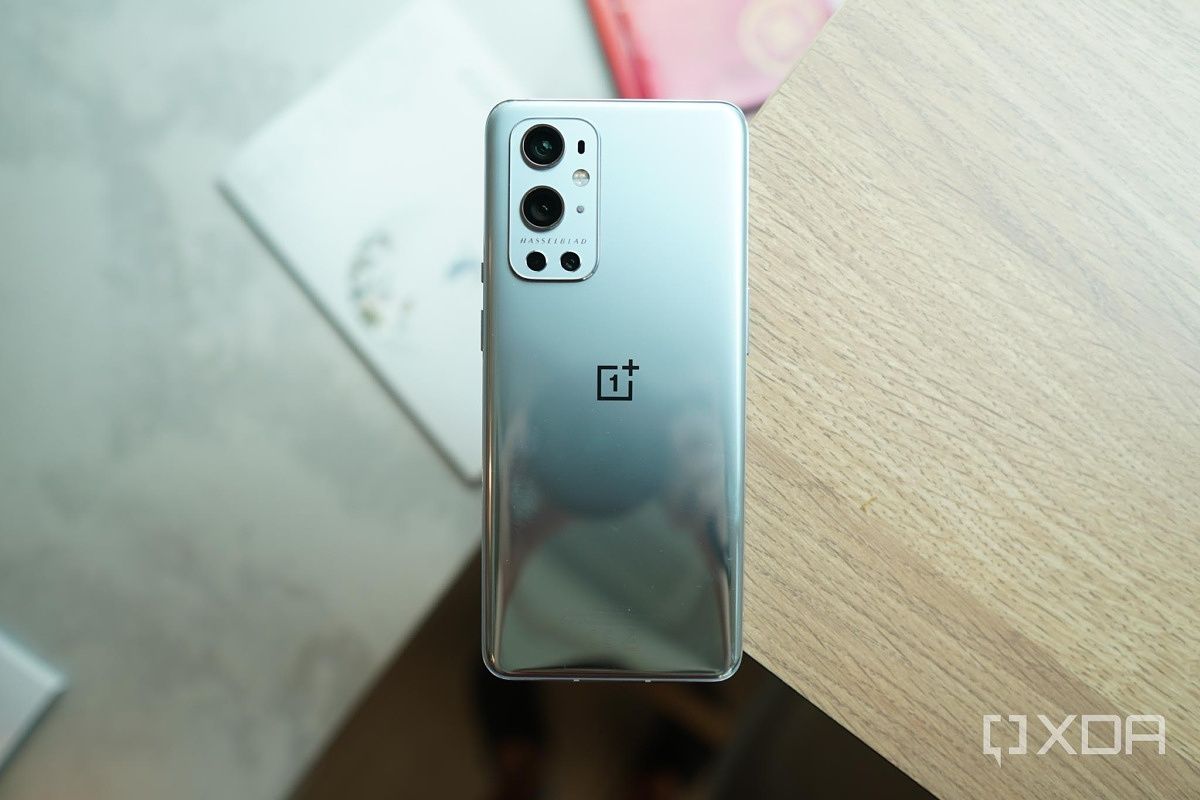Picking the phone with the best camera used to be an easy exercise. In the early days of the smartphone, the iPhone’s camera was leaps and bounds better than Android offerings. Then big-name Android brands caught up and for a couple of years in the mid-2010s Samsung held the crown. Towards the latter part of the decade, I’d say Google and Huawei each dominated the software and hardware part of mobile photography respectively. But starting around 2019 or so, other brands — mostly Chinese — stepped up their digital imaging game by investing more resources; Apple paid more attention to computational photography; Samsung took a page or two out of Huawei’s book in terms of camera hardware.
Brands got innovative and creative across the board. So mobile cameras today have become so capable and diverse that it’s impossible to just say one phone is the absolute best, as all of the best smartphones have great cameras — many with a unique trick or two. So the best way to evaluate these cameras is to break them down into different shooting categories.

We here at XDA have tested almost every smartphone that sees release — even the obscure, China-only ones — and here’s our breakdown on the best cameras for each specific need.
Navigate this article:
- Best camera system for versatility: Samsung Galaxy S21 Ultra
- Best camera for daytime photos: Google Pixel 5
- Best camera for nighttime or low light photos: Vivo X60 Pro+
- Best camera for portraits: Google Pixel 5/Xiaomi Mi 11 Ultra
- Best ultra-wide camera: OPPO Find X3 Pro/OnePlus 9 Pro
- Best selfie camera: Vivo V21
- Best zoom cameras: Samsung Galaxy S21 Ultra
- Best camera for video: iPhone 12 series
- Best camera software and features: Xiaomi Mi 11 Ultra
- Conclusion
Best camera system for versatility: Samsung Galaxy S21 Ultra

The Samsung Galaxy S21 Ultra is the apex smartphone, so it makes sense that its camera system is the most versatile camera. Its 108MP camera produces super sharp and vibrant photos — and if you get close enough to a subject, there’s even a nice natural bokeh effect too. The 12MP ultra-wide has one of the widest field-of-view around without noticeable distortion, making it ideal for landscape photos or cinematic videos; and there are not one but two zoom lenses that cover both, short zoom (3x telephoto) and long zoom (10x Periscope). Throw in the laser autofocus and a pixel-dense 40MP selfie camera, and this is a camera system that uses the absolute latest and most cutting-edge in mobile camera tech. But words can only say so much — we’ll let these photo samples do the talking.






It’s not just hardware though; Samsung’s camera software and image processing has improved to make the shooting experience better. Bring the Galaxy S21 Ultra close to an object for example, and the very good macro mode automatically kicks in. Shoot in low night scenarios, and night mode turns on automatically. Zoom to 50x and beyond, and the “Zoom Lock” feature enables the viewfinder to stay still despite shaky hands — this feature is useful for shooting the moon.


The Galaxy S21 Ultra camera system isn’t perfect — it tends to oversharpen selfies, and there’s an ever-so-subtle shutter lag; but still, if you want the best overall, most versatile system that doesn’t fail in any single category, this is the system, with only the next phone on this list reasonably within range to challenge the throne.
- With four cameras covering every spectrum of the focal length and some intelligent shooting modes, the Samsung Galaxy S21 Ultra is the most versatile camera system around.
Also great: Huawei P40 Pro Plus

Even though it’s over a year old, we’re giving a shout out to the Huawei P40 Pro Plus here because most of the things that made the Galaxy S21 Ultra camera so great were first seen in this smartphone, including the 10x Periscope zoom camera and the use of a secondary shorter 3X telephoto zoom. In fact, the Huawei P40 Pro Plus is still a superior low light performer than the Galaxy S21 Ultra thanks to its larger image sensor and RYYB filtering array, but the Huawei P40 Pro finishes second in this category because it’s a one-year-old phone using an older ISP, its zoom stabilization beyond 10x or so lags behind the Galaxy S21 Ultra, and the lack of GMS makes the phone a hard sell for most readers. Still, it’s worth crediting the phone that essentially did all the things Samsung is doing now a year before.
- The Huawei P40 Pro Plus was the most capable smartphone camera of 2020, and if not for the Galaxy S21 Ultra, it'd still hold the title today.
Best camera for daytime photos: Google Pixel 5
![]()
This category was very tough to decide, because every recent phone from established brands, even mid-tier models, performs very well during the day. And honestly, choosing a winner for this category, more than any of the other ones in this article, is a subjective exercise. But ultimately, we chose the Google Pixel 5 for several reasons: we like its color science the best, and the Pixel 5 is arguably the most mistake-free camera in the Android space if you just want to point and shoot without much thought.




Of course, a Galaxy S21 Ultra and Mi 11 Ultra with their newer more capable hardware can capture photos that are noticeably sharper if you pixel-peep on a monitor. But both of those phones have a minor shutter lag that has made us miss the occasional shot of moving subjects. And while the cameras of the OnePlus 9 Pro, OPPO Find X3 Pro, and Vivo X60 Pro Plus produce brilliant colors, their HDR can be a hit or miss, especially when shooting against backlight. As for the iPhone? We just find the color science a bit too warm and “plain” for our taste, and its portrait mode is not as sensational as the Pixel’s. Google’s computational photography is still the smartest of the bunch, even if its camera hardware is a bit long in the tooth.
- The Google Pixel 5's camera sensor may be several years old, but it's still backed by the best computational photography algorithms around that allows it to capture excellent portrait shots and day time photos.
Also great: Xiaomi Mi 11 Ultra

We chose the Xiaomi Mi 11 Ultra over other strong contenders because its main camera has the largest image sensor size (1/1.12″) of all released phones right now (Sharp’s Aquos R6 has an even larger sensor but it’s not officially on sale yet). That larger sensor has a shallower depth-of-field, which results in photos or videos with a natural bokeh effect if there’s an object/subject in the foreground. It’s a pleasing aesthetic that looks closer to photos produced by a real camera.



- The main camera of the Xiaomi Mi 11 Ultra features the largest image sensor in the smartphone industry right now, allowing it to take in a lot of light and produce natural depth-of-field background separation between subject and backdrop.
Best camera for nighttime or low light photos: Vivo X60 Pro+

Vivo isn’t exactly known for making great main cameras, so imagine our surprise when the Vivo X60 Pro Plus outperformed all the other phones on this list in nighttime or low light photography.
Most of the magic is due to the fact the Vivo X60 Pro Plus uses the 50MP Samsung ISOCELL GN1 with a large 1/1.3” sensor, which up until the Mi 11 Ultra’s release was the largest image sensor on the market. In fact, Xiaomi’s phone uses a newer version of the same ISOCELL sensor, but Vivo’s software has done a better job of fine-tuning colors and dynamic range in our testing. For example, in the below set of photos captured without night mode in a dark bedroom with only a bit of light peeking from the window, notice Xiaomi’s camera totally blows out the light from the outside. And while Samsung’s image looks like it holds up well at a glance, examine closer and you’d see Vivo’s image has less noise, more details, and better illuminated the dark corners of the room (like the plastic cabinet on the left side of the window).



For general night photos out in the city, the Vivo X60 Pro Plus produces noise-free, sharp, and vibrant images — again, without the need to resort to night mode.



Here’s another sample of the low light prowess of the X60 Pro Plus, as it crushes the Galaxy S21 Ultra in terms of purely pulling in light.


- The Vivo X60 Pro Plus' main camera excels in low light thanks to its large sensor excellent software optimization.
Best camera for portraits: Google Pixel 5/Xiaomi Mi 11 Ultra

Google’s computational photography is second to none, as evident by the fact that for years, its Pixel phones were able to produce the best portraits with a bokeh effect despite using only one camera (while other phones marketed the use of a dedicated depth sensor for the task).

However, Google hasn’t bothered to upgrade its camera hardware in years and it shows, as the Pixel 5’s bokeh prowess — however great it may be — hasn’t changed from the Pixel 4 or Pixel 3 for that matter. In 2021, camera hardware has advanced to such a degree that just software isn’t always enough. And so we’re making this category a tie between the Pixel 5 and the Mi 11 Ultra.
The Pixel is still the best if you want an image of a subject with convincing background blur — and the fact that the Pixel can produce said blur around both living and inanimate objects gives it a leg up over, say an iPhone, whose portrait mode really only works on humans and some mammals. Below are some more portrait mode samples captured by the Pixel 4 or 5.



But the Mi 11 Ultra’s gigantic, almost 1-inch sensor allows it to produce a natural depth-of-field that’s superior to other cameras, as evident by the set of photos below. I took all three photos without portrait mode, with a focus on the Sony camera’s lens. Notice the iPhone 12 image appears flat, without much depth-of-field.



The Galaxy S21 Ultra’s camera seems to have done just as good a job as the Mi 11 Ultra, but zoom closer and Xiaomi’s camera did a clearly superior job of keeping the subject in focus.

Mi 11 Ultra (left); Galaxy S21 Ultra (right).
The best part about the Mi 11 Ultra’s natural bokeh is that it will show even in videos — just see the difference in background separation between the stills below.


Best ultra-wide camera: OPPO Find X3 Pro/OnePlus 9 Pro


When I reviewed the OPPO Find X3 Pro back in March, I said it had the best ultra-wide angle camera I’ve ever tested. Less than a month later, another phone’s ultra-wide matched that performance — by using the exact same sensor (and likely manufactured in the same assembly line).
That 50MP Sony IMX 766 sensor uses freeform lens technology to allow for distortion-free ultra-wide images, and both brands have done a magnificent job of fine-tuning the sensor to fit into its system. Color sciences differ slightly, but for the most part, they produce very similar ultra-wide shots that are sharper than Samsung’s and Apple’s ultra-wides.




Because the Find X3 Pro and OnePlus 9 Pro’s ultra-wide sensors are so pixel-dense, they keep enough details to keep pace with the main camera. I love that with both of these phones I can capture a standard wide photo and then an ultra-wide and know the two photos will be consistent in sharpness, dynamic range, and color science.


- The OPPO Find X3 Pro's ultra-wide camera captures very sharp and vibrant photos that don't exhibit distortion or significant loss of details.
- The OnePlus 9 Pro's ultra-wide camera uses the exact same sensor as the OPPO Find X3 Pro's -- so expect the same excellent ultra-wide photos.
Best selfie camera: Vivo V21

Vivo’s V series has always prioritized the front-facing camera above all else, and the Vivo V21‘s 44MP selfie camera with two flashes and OIS takes the crown here.


It’s not just hardware, however — Vivo’s selfie software also offers granular controls, from the level of background blur to several different flash lighting options to an excessive beautifying mode that can apply digital makeup. Notice in the third and fourth picture of the below samples, I shot against a very harsh backlight, but the selfie still managed to highlight my face without blowing out the backlight.




The in-built OIS reduces potential blurry shots during low light selfies (when the camera either slows shutter speed or turns on night mode), or walk-and-talk style vlogs.
Best zoom cameras: Samsung Galaxy S21 Ultra

The Galaxy S21 Ultra at 30x with zoom lock enabled.
As we already spoiled in the “Best Overall” category, the Galaxy S21 Ultra has the most capable zoom system around. In the sample below, whether it’s 10x, 30x, or 50x zoom, the Galaxy S21 Ultra produced a sharper, less noisy image than the Xiaomi Mi 11 Ultra, whose own zooming prowess is no slouch.








As mentioned, the Huawei P40 Pro Plus actually pioneered most of the zooming tech used in the Galaxy S21 Ultra, and for the most part, both camera systems are neck and neck in terms of zoom shot quality. However, the Galaxy S21 Ultra takes the win because of the “Zoom Lock” software that automatically keeps the viewfinder still when zooming beyond 10x.


Best camera for video: iPhone 12 series

The iPhone 12 Pro Max, iPhone 12 Pro, and iPhone 12 Mini.
Most flagship smartphones can capture high-quality videos now, but the iPhone 12 series still takes the win because it has the best combination of stabilization, the ability to adapt to changing exposure, and the option to shoot in Dolby Vision. The iPhone’s superior stabilization is most noticeable at night when iPhone footage exhibit fewer micro-jitters compared to Android counterparts.
- The iPhone 12 -- along with other phones in the 12 series -- can shoot vibrant and stable 4K videos at up to 60fps. If you've got the screen that can handle the content, the iPhone 12 series can also shoot footage in Dolby Vision.
Best camera software and features: Xiaomi Mi 11 Ultra
If we’re talking about just the UI of the camera app, how easy is it to cycle through different shooting modes? How responsive is the camera? I’d give the win to the OnePlus’ camera app. But once we factor in additional features that produce a different image, then I don’t think any camera software right now comes close to Xiaomi’s.





Xiaomi’s MIUI 12 and its camera app has a comprehensive manual mode with focus peaking, a histogram, and quick dials to adjust ISO and shutter speed. The regular camera interface is easy to use with all the key buttons including zoom dial and selfie camera swap within thumb’s reach. But it’s the additional shooting modes that make the software so fun to use. For example, Xiaomi’s camera app includes an “AI Sky Editor” that allows the user to add a filter to any photos that are showing the sky.





This feature could have easily been tacky and garish, but the results are actually quite realistic and aesthetically pleasing.






Another fun trick is clone, which lets most recent Xiaomi phones quickly clone multiple instances of the same subject in one shot. Sure, there are computer photo editing software and perhaps even apps that can do the same tricks, but Xiaomi having these features built into the camera app makes it so much more accessible.

The clone feature is part of Xiaomi’s camera app.
It works with both photos and videos.

Conclusion: Smartphone cameras are getting really, really good
There’s a popular saying: “the best camera is the one you have with you.” For almost all of us, that would be the smartphone camera — and we’re blessed to live in an era when smartphone cameras have grown so capable. Sure, professional photographers will always scoff at the idea of a smartphone ever able to replace the need for a real camera. But for most people, that’s already the case. When you travel to a tourist spot — do you see more smartphone cameras or DSLRs?
Obviously, if you want the most versatile system that covers all the bases, the Galaxy S21 Ultra is the one to get. However, if you’re okay with saving some money, the Vivo X60 Pro Plus‘s cameras are almost as capable — and it performs better at night. Likewise, if you’re a longtime iOS user and don’t want to switch, the iPhone 12 series is still a highly polished camera with some of the best HDR technology around.
The thing is, 2021 is not even half over — there will be more phones to come. And if any of the upcoming releases outperform phones on this list, we’ll update accordingly. So check back regularly to keep up to date on this competitive mobile camera arms race.
The post Best Smartphone Cameras of 2021: Apple, Samsung, Xiaomi, OnePlus — We’ve tested them all! appeared first on xda-developers.
from xda-developers https://ift.tt/3fRicJb
via IFTTT























